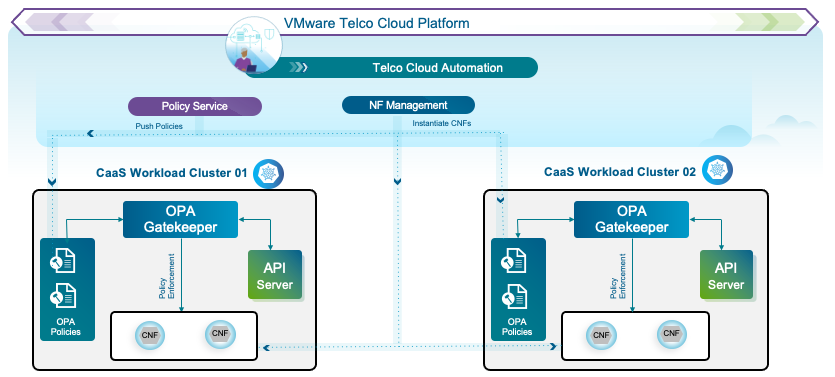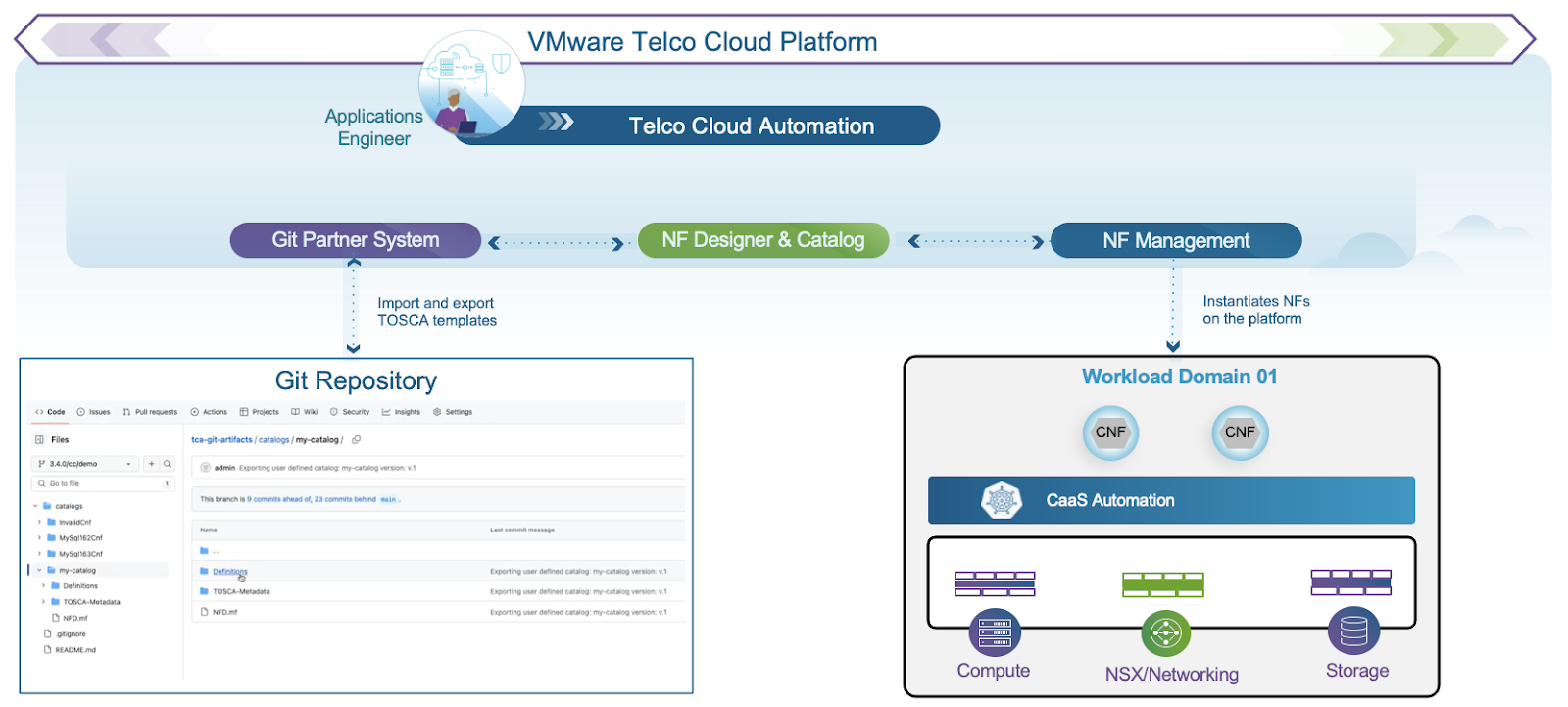As of today, VMware Telco Cloud Platform 5.1 is generally available.
For years, telco transformation was framed as a question of speed and scale, with industry executives grappling with questions such as how fast could network operators adopt 5G, roll out services, or shift to cloud-native? The narrative has shifted due to the rise of AI, heightened regulations and shift in the digital landscape. Today’s telco conversations center on issues such as data sovereignty and not just standard compliance with privacy and security laws, automation and not just monetization, cutting edge performance not just standard off the self service levels etc.
Across the market, the motion is clear: automated secure network functions (mainly CNFs) are now the priority because they help address the above noted issues with solutions far better than any alternative, as they can be onboarded quickly, customized and governed consistently, and updated without redeployment. In this new reality, cloud platforms must do more than just support containers or virtual machines. They must offer features that are the baseline of this trend, namely: in-service upgrades, consolidate VNFs and CNFs under a single automation framework, simplify lifecycle operations, enforce policy, data protection, and control to operators over what, how and where workloads run.
That’s where VMware Telco Cloud Platform comes in, as it anchors the network connectivity layer enabling network operators to define, manage, and enforce how traffic flows and where workloads live. This is why it is commonly positioned at the heart of sovereign cloud or AI-driven cloud infrastructure stacks. It enables network operators to become sovereign cloud leaders with trusted, AI-driven cloud infrastructure built for automation, security, scale and innovation with unmatched operational simplicity.
With VMware Telco Cloud Platform 5.1, we’re taking another step forward by enhancing platform’s capabilities across cloud-smart automation with telco cloud automation (TCA), lifecycle management for both VNFs and CNFs, and security enforcement built to support multi-vendor network functions that today’s network operators care. Please find below some of the top features in the Telco Cloud Platform 5.1 release.

Carrier-Grade Kubernetes Infrastructure
VMware Telco Cloud Platform 5.1 expands support for modern Kubernetes operations with the introduction of Kubernetes version 1.33.1. This update significantly shortens the gap between upstream Kubernetes releases and their availability in the platform bringing it down to approximately three months. In addition, operators can run network functions on different Kubernetes versions based on their requirements. As a result, operators can gain flexibility and quicker access to the latest capabilities while maintaining the stability required for production-grade telco workloads.
Kubernetes 1.33.1 receives an extended support window of 2 years (1 year standard + 1 year extended), starting from the release date of Telco Cloud Platform 5.1. This policy also applies to Kubernetes 1.30.2 (introduced in Telco Cloud Platform 5.0) and Kubernetes 1.27.15 (introduced in Telco Cloud Platform 4.0.1)

Smarter Kubernetes Lifecycle Operations
Managing Kubernetes at scale continues to challenge operators especially when maintaining multiple versions across environments, coordinating upgrades with minimal disruption, and ensuring operational continuity. VMware Telco Cloud Platform 5.1 addresses this by introducing modular, workflow-driven lifecycle automation with Workflow Hub that gives operators greater flexibility and control without requiring full-stack rework.
- Automated Kubernetes Version Upgrades:
Operators can now upgrade Kubernetes clusters across versions ES 1.27.15 to ES 1.33.1 using a built-in workflow in TCA Workflow Hub. This automation reduces manual effort and introduces early failure detection to prevent upgrade disruptions. It allows teams to efficiently manage multi-version environments, stay aligned with CNF compatibility, and accelerate platform modernization with reduced operational overhead. - IaaS LCM Workflow for ESXi Cluster Upgrade:
Designed for telco workloads supporting latency-sensitive use cases, the in-place ESXi upgrade workflow preserves the state of active VMs and node pools during infrastructure upgrades. This eliminates the need for workload redeployment and helps operators navigate tight maintenance windows while minimizing service impact—ensuring operational stability during platform transitions.
Together, these lifecycle enhancements help operators streamline complex upgrades, reduce operational risk, and extend the platform’s value.
Built-In Governance and Policy Enforcement
As Kubernetes adoption grows, CSPs must balance developer agility with operational governance. Telco Cloud Platform 5.1 addresses this need by introducing a Kubernetes Policy Manager based on Open Policy Agent (OPA). It enables network operators to enforce pre-configured security governance policies aligned with NSA/CISA guidelines across a fleet of Kubernetes clusters.

These policies are managed through a centralized dashboard, where operators can:
- Streamline compliance audits supporting both platform security and application-level enforcement at scale.
- Monitor compliance across clusters and trace violations back to specific CNFs.
- Use a centralized dashboard to adjust and manage policies across a fleet of clusters.
- Retain policy configurations during Kubernetes upgrades and node lifecycle events, ensuring governance continuity.
- Detects policy drift, minimizing configuration mismatches caused by unauthorized changes.
- Prevent misconfigurations and escalation by enforcing consistent security controls.
Git-Driven CNF Lifecycle Management
VMware Telco Cloud Platform 5.1 enhances xNF development and onboarding lifecycle workflows by introducing bi-directional Git integration for managing TOSCA-modeled network function packages (CSARs). With this capability, an external Git repository can be leveraged as the centralized source for storing, versioning, and distributing CNF artifacts across multiple TCA deployments.

This feature brings several operational advantages:
- With the introduction of Git as the source repository for CSAR packages, the rest of the CNF life cycle remains unchanged, preserving a consistent UI experience.
- Automatic validation of imported CSARs ensures onboarding readiness
- Consistent distribution of artifacts across multiple TCA environments
- Reduced duplication and manual handling through reusable, version-controlled packages
- Clear traceability with Git-managed version histories, helping teams manage updates, rollbacks, and audit requirements more efficiently
- Eliminates the need to package and repackage TOSCA artifacts into CSAR files for every revision of an artifact
Other new features include:
Harbor CNF Certificate and Credential Management
Enhances observability and lifecycle management of Harbor registry certificates and credentials via Connected Endpoints. These capabilities reduce operational overhead and enable quicker root cause analysis when CNF operations fail due to expired credentials.
Automated Certificate and Token Renewal for CaaS Components
Supports real-time monitoring and auto-renewal of certificates and kube-config tokens for both system-level components. This reduces manual maintenance and ensures continuous service availability.
For a full summary of what’s new, visit the release notes.
VMware Telco Cloud Platform 5.1 delivers clear, measurable value to telco operators:
- Fewer manual steps in lifecycle and upgrade processes
- Faster onboarding of network functions with built-in validation and automation
- Stronger enforcement of policy and compliance
- Greater operational insight and observability
- Scalable, sovereign-ready infrastructure that’s built for AI and next-gen traffic
Learn More:
For network operators accelerating their journey to cloud-native and sovereign cloud models, VMware Telco Cloud Platform 5.1 delivers both the control and agility required to make that transition real.
Discover more enhancements and technical details in the official VMware Telco Cloud Platform documentation.
Discover more from VMware Telco Cloud Blog
Subscribe to get the latest posts sent to your email.








